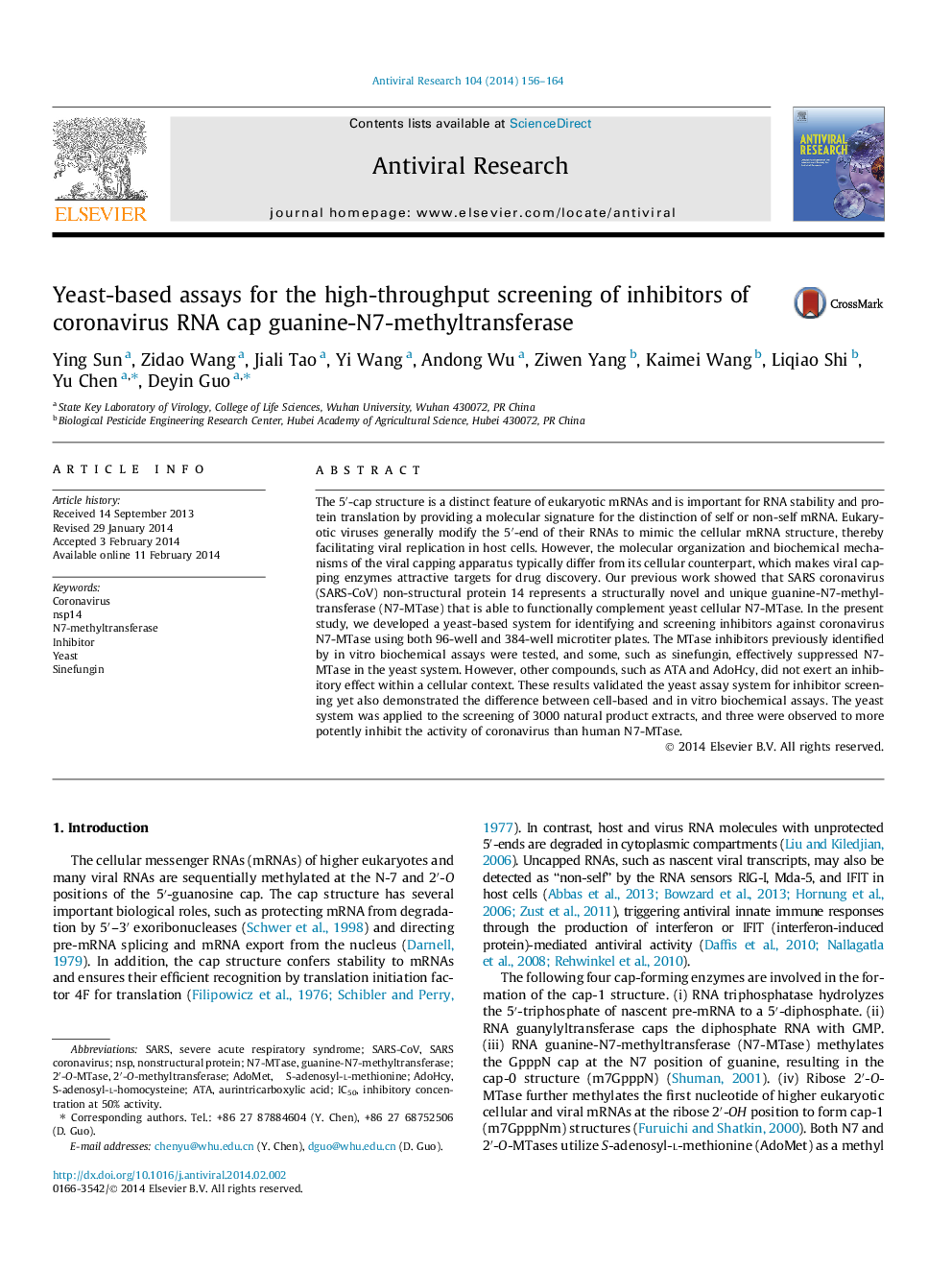| Article ID | Journal | Published Year | Pages | File Type |
|---|---|---|---|---|
| 2509899 | Antiviral Research | 2014 | 9 Pages |
•A yeast-based system for screening of coronavirus N7-MTases inhibitors was developed.•Sinefungin is not an ideal antiviral inhibitor.•Three natural extracts were observed to specifically inhibit the N7-MTases of coronavirus.
The 5′-cap structure is a distinct feature of eukaryotic mRNAs and is important for RNA stability and protein translation by providing a molecular signature for the distinction of self or non-self mRNA. Eukaryotic viruses generally modify the 5′-end of their RNAs to mimic the cellular mRNA structure, thereby facilitating viral replication in host cells. However, the molecular organization and biochemical mechanisms of the viral capping apparatus typically differ from its cellular counterpart, which makes viral capping enzymes attractive targets for drug discovery. Our previous work showed that SARS coronavirus (SARS-CoV) non-structural protein 14 represents a structurally novel and unique guanine-N7-methyltransferase (N7-MTase) that is able to functionally complement yeast cellular N7-MTase. In the present study, we developed a yeast-based system for identifying and screening inhibitors against coronavirus N7-MTase using both 96-well and 384-well microtiter plates. The MTase inhibitors previously identified by in vitro biochemical assays were tested, and some, such as sinefungin, effectively suppressed N7-MTase in the yeast system. However, other compounds, such as ATA and AdoHcy, did not exert an inhibitory effect within a cellular context. These results validated the yeast assay system for inhibitor screening yet also demonstrated the difference between cell-based and in vitro biochemical assays. The yeast system was applied to the screening of 3000 natural product extracts, and three were observed to more potently inhibit the activity of coronavirus than human N7-MTase.
